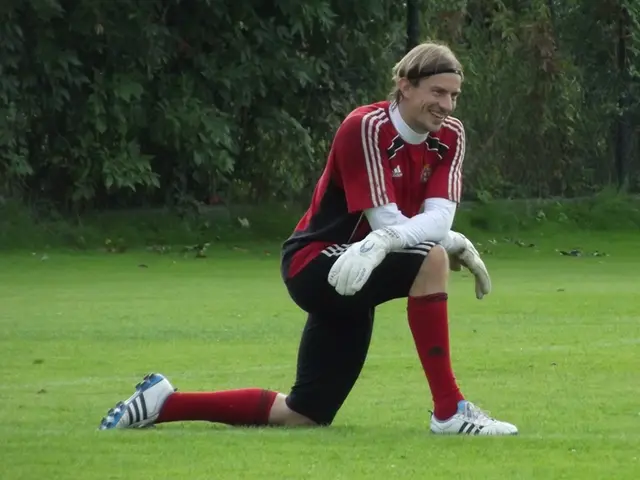Common Ailments in Running (and Solutions for Each)
Runners frequently face injuries during their training journey, ranging from minor aches to severe conditions that could potentially derail their progress toward personal records (PRs). Understanding some of the most prevalent running injuries can aid in addressing or preventing pain that impedes performance.
Common Running Injuries
Plantar Fasciitis
Plantar fasciitis, an overuse injury affecting long-distance runners and heavier individuals, often results in heel or arch pain exacerbated by the initial steps following rest or sleep. While the pain may subside over time, this does not necessarily mean the injury isn't causing damage. Cross-training — cycling, swimming, deep-water running, or using an elliptical trainer — may be beneficial for those suffering from this issue.
IT Band Syndrome
Pain felt over the lateral (outer) knee, in absence of a recent fall or other trauma, is usually caused by iliotibial (IT) band syndrome. The IT band is a dense connective tissue running along the outer leg from the hip down to the knee, susceptible to irritation due to repeated bending and straightening of the knee, especially during running. Runners with IT band syndrome often experience discomfort more acutely when running downhill, on uneven surfaces, or while climbing or descending stairs.
Shin Splints
Overuse injuries such as shin splints, which manifest as pain over the tibia, become more common as runners increase mileage before marathons or races. Also known as medial tibial stress syndrome, shin splint pain is typically described as a dull ache spanning the lower leg. Initially, the pain is only experienced during running, but it can become continuous and persist beyond the end of a run if left untreated, potentially progressing to stress fractures.
Stress Fractures
Stress fractures — partial or complete bone fractures caused by prolonged stress — can develop in various bones of the body, including the tibia, metatarsals, fibula, and other foot bones, femur, and pelvis. Training errors, changes in surface, and an "energy imbalance" (e.g., inadequate caloric intake) can contribute to stress fractures.
Runner's Knee
Runner's knee, causing pain behind the kneecap, is often diagnosed when pressure between the kneecap and femur increases due to abnormal movement, possibly due to weakness in the vastus medialis or gluteus medius muscles. The pain may worsen after extended periods of sitting, climbing stairs, or during running, and can persist for some time afterward.
Hamstring Injuries
Hamstrings — the major muscles in the back of the thigh — are prone to injuries, particularly in long-distance runners. Injuries can range from posterior thigh pain (not necessarily hamstring-specific) to strains, tendinopathy, and complete tears of the muscle or tendon. Sudden back thigh pain, often accompanied by a pop or warmth, may indicate a hamstring injury, most likely to occur when moving faster or during stretching.
Preventing Injuries
Prevention is crucial in combating running injuries. Central to injury prevention is gradual training and proper planning to allow the body sufficient time to adapt to increased demands. Many runners preparing for marathons may underestimate the necessary time frame, which could be as long as 6 to 12 months or more. Abrupt increases in distance, intensity, or frequency may lead to overuse injuries.
Adequate warm-up routines are essential before engaging in intense exercise. A light, short-distance jog and gentle stretching will help prepare the body for more strenuous activity. The optimal warm-up routine varies among individuals, but it should be tailored to an individual's needs in terms of stretches, meals, shoes, and clothing before race day.
Addressing Injuries
While preventing injuries is ideal, not all can be avoided. Swift recovery is critical when unforeseen issues arise, such as blisters or leg cramps. Pushing through significantly painful symptoms should be avoided. Reducing mileage, icing, resting, taking over-the-counter anti-inflammatories, and stretching may facilitate recovery. For chronic or severe pain, seeking medical advice may be necessary.
If limitations arise during training or a race, slow your pace, walk, rest, or stretch before resuming activity. Severe symptoms, such as chest pain, difficulty breathing, lightheadedness, or confusion, necessitate an immediate stop and assistance. Training appropriately, planning carefully, listening to your body, and prioritizing safety above all else are paramount.
Dr. Mark Harrast, a sports medicine physician and medical director of the Sports Medicine Center at Husky Stadium and the UW Medicine Seattle Marathon, specializes in diagnosing and treating sports-related injuries and illnesses in endurance athletes, runners, and triathletes. He is also an accomplished competitive endurance athlete himself.
Incisive research on the commonly encountered running injuries, their symptoms, and strategies for prevention and treatment has been provided. Being aware of these issues and actively working to prevent and treat them can help runners remain active and consistently achieve their fitness goals.
[Reference citations removed for brevity]
- While cross-training like cycling, swimming, or using an elliptical trainer can be beneficial for those suffering from plantar fasciitis, maintaining a fitness routine focused on health-and-wellness and fitness-and-exercise can help prevent the development of such overuse injuries in the first place.
- Science indicates that addressing running injuries swiftly is essential for recovery, with strategies such as reducing mileage, icing, rest, and over-the-counter anti-inflammatories often helping alleviate pain in minor cases. However, chronic or severe pain may necessitate medical attention.
- Aging runners, such as those preparing for marathons, should be particularly mindful of training gradually and properly planning their training journeys, allowingtheir bodies sufficient time to adapt to increased demands to prevent overuse injuries like shin splints, stress fractures, and runner's knee.







